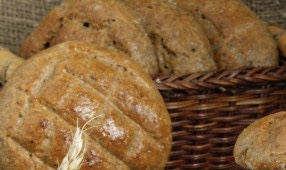



I propose a simple recipe for fragrant homemade pastries - rye cakes. They are extremely tasty not only thanks to the rye flour, but also the addition of brewed rye malt. You can serve such cakes not only with the first courses, but also make sandwiches with them or just use them as a snack.
The recipe for this simple and tasty bread includes two types of flour - rye and wheat. By the way, rye flour is suitable both wallpaper and seeded or peeled, and use wheat of any kind. If desired, the blanks for rye cakes can not only be greased with egg yolk, but also sprinkled with caraway seeds, flax seeds, coriander, seeds, or sesame seeds.

I propose a simple recipe for fragrant homemade pastries - rye cakes. They are extremely tasty not only thanks to the rye flour, but also the addition of brewed rye malt. You can serve such cakes not only with the first courses, but also make sandwiches with them or just use them as a snack.
The recipe for this simple and tasty bread includes two types of flour - rye and wheat. By the way, rye flour is suitable both wallpaper and seeded or peeled, and use wheat of any kind. If desired, the blanks for rye cakes can not only be greased with egg yolk, but also sprinkled with caraway seeds, flax seeds, coriander, seeds, or sesame seeds.
Sign up to receive email updates on new recipes.